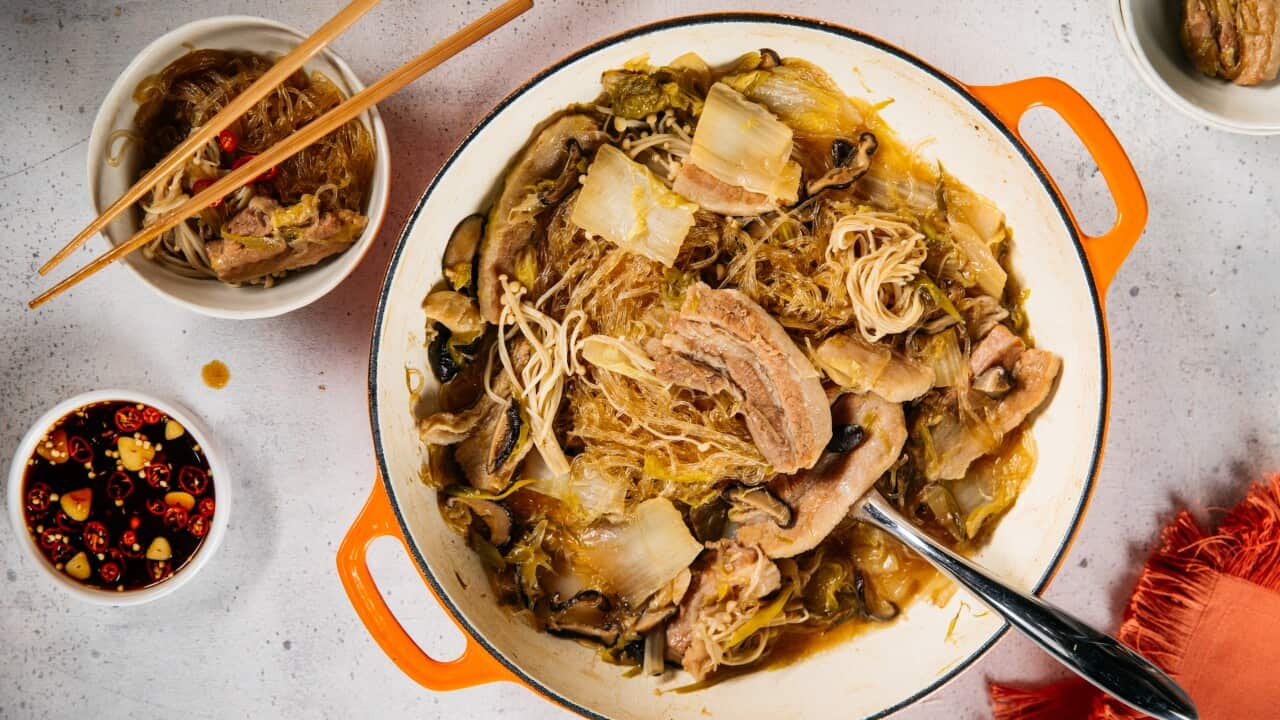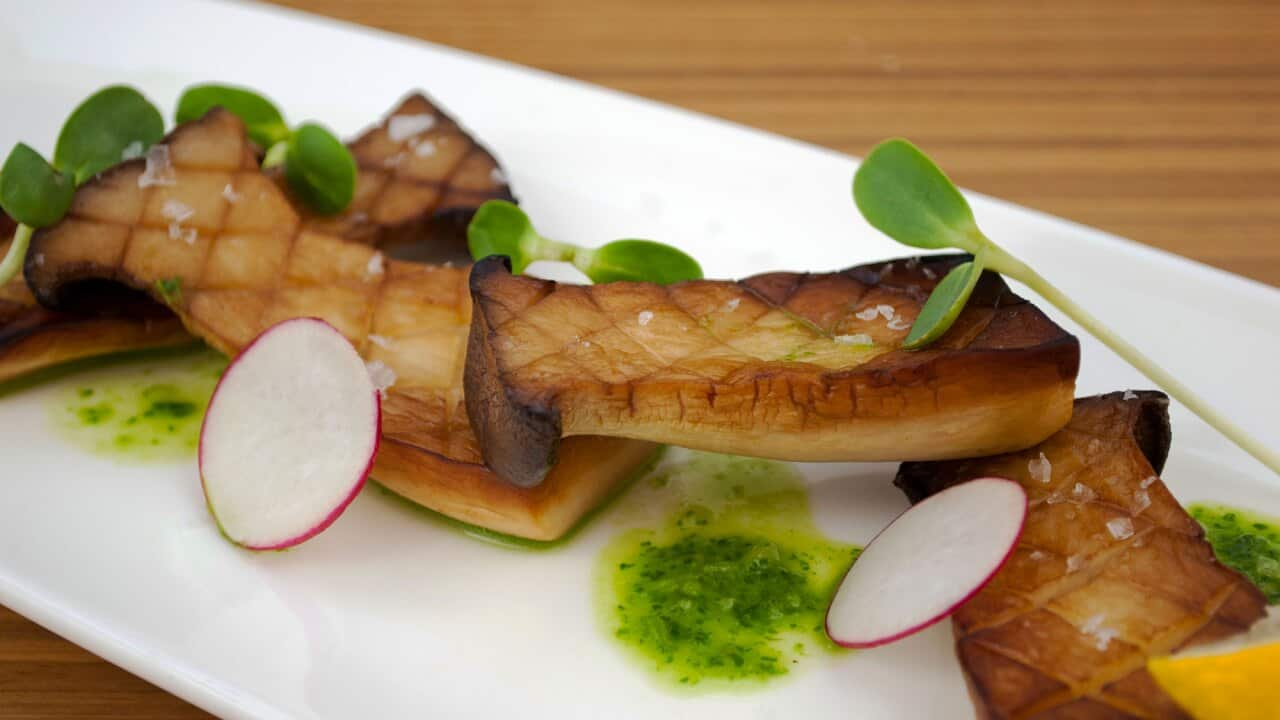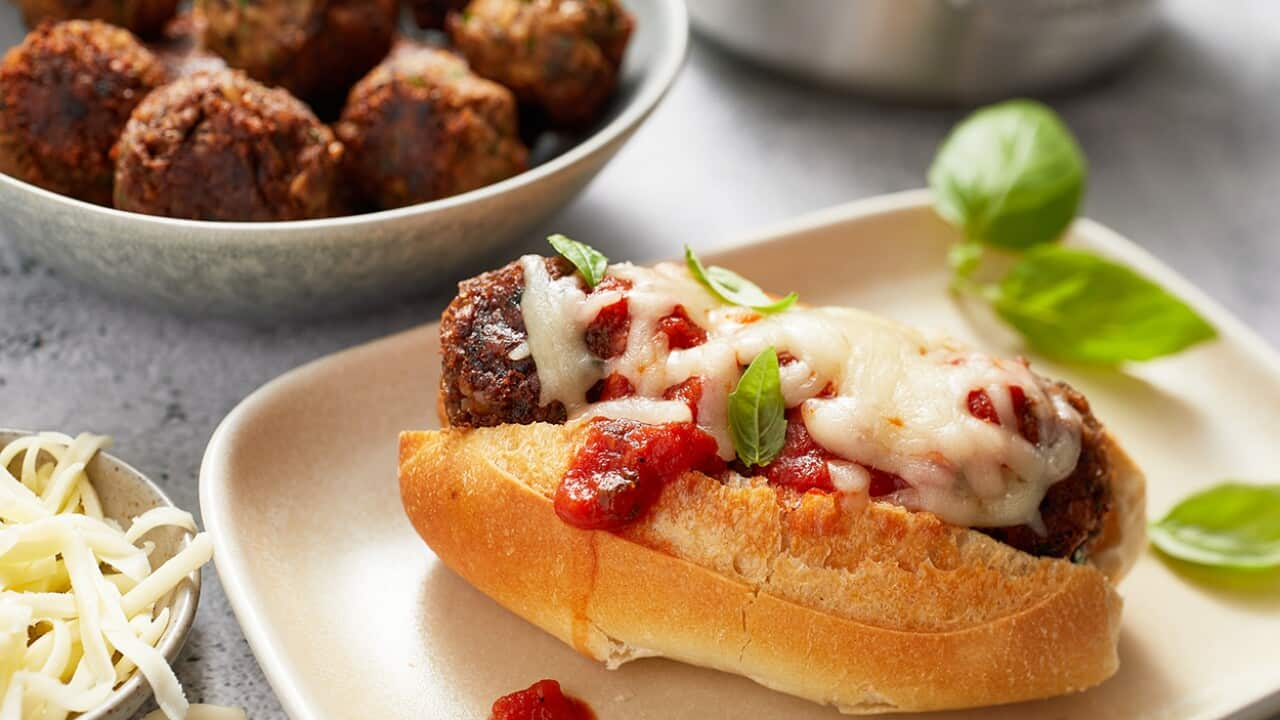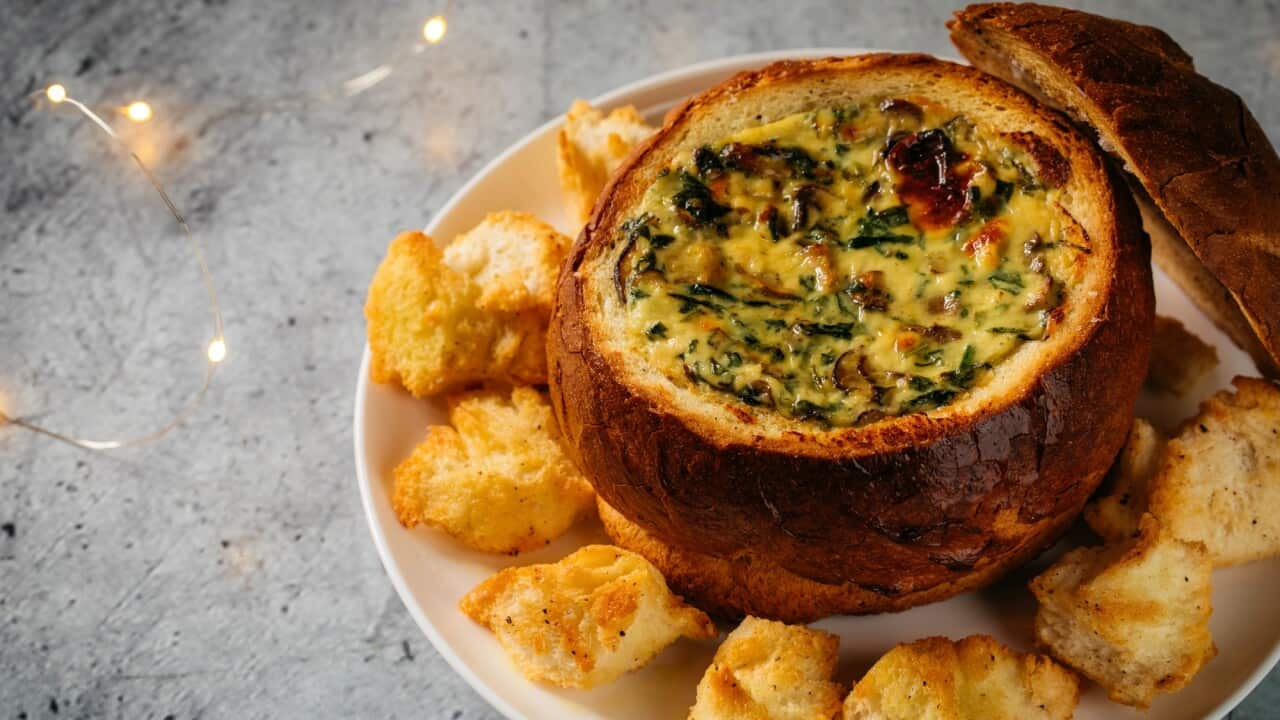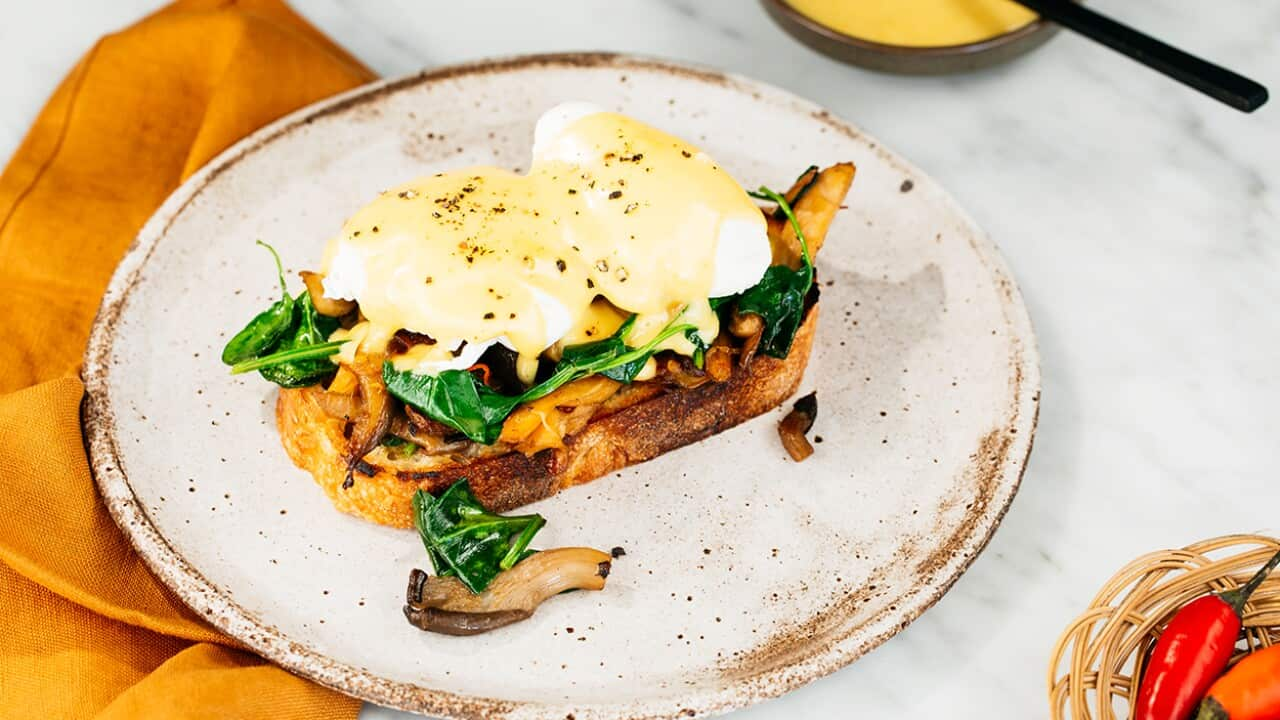--- Stream from Sunday 30 April at 8:30pm or watch live on SBS Food (channel 33). For recipes, articles and more visit . ---
"Five to seven years ago, it was hard to find exotic mushrooms. But now you see them everywhere in supermarkets, even as multi-packs," Leah Bramich, relationship and general manager of The Australian Mushroom Grower's Association, tells SBS Food.
And she says it's all thanks to Australians becoming more adventurous in cooking and open to trying new things.
But how do you get the most out of these wonders of nature that come in all different sizes, shapes, colours, and textures? What is the best way to prepare, store and cook them?

Mushroom adobo Source: Danielle Abou Karam
Wash or not to wash?
The "wash or not to wash" debate comes from the porous structure of the mushroom, which absorbs moisture. The best way to clean mushrooms is by brushing off or wiping away any dirt and debris attached. But when mushrooms are visibly dirty, they can be washed.
"You can wash them quickly but do not soak them. And most importantly, cook them straight away," says Ms Bramich.
"And don't pop off the stalk or peel the mushrooms."
Nutrients such as beta-glucan are in these structures, so mushrooms should be eaten whole.
Plastic or paper bag?
Mushrooms are 96% water, so they need to breathe. This is why individual mushrooms are sold next to brown paper bags rather than plastic bags.
"Many people do not know that the plastic used in pre-packaged mushrooms are special plastics that allow them to breathe and last longer."
In paper bags, mushrooms should last eight days in the fridge, while in the special plastics, five days.
Go raw?
Unlike the good old button mushrooms sliced and tossed raw in salads, it is best to cook exotic mushrooms, says Ms Bramich.
“In Australia anything you buy from supermarkets has strict food safety standard. Anything grown in Australia is fresh because it is picked and shelved in matter of days."
However, exotic mushrooms tend to have a much longer shelf life. They may have the risk of carrying unfavourable bacteria like in enoki and wood ear mushrooms, which can easily be killed off by heating to a certain temperature.
Cooking with exotic mushrooms
Enoki mushrooms
Enoki is long skinny mushrooms sold in a bundle with the roots still attached, which needs to be removed and cleaned before cooking. Enoki is a common ingredient in Asian cooking, terrific for stir-frying and sauteing, and is an easy addition to noodles and hot pots. These can even be deep-fried for a crispy snack, like in Japanese tempura.
Shiitake mushrooms
Shiitake are umami-rich mushrooms, often used as a flavour-enhancing ingredient in broths and stocks in Asian cooking. These are rich and meaty, making them a perfect ingredient for stir-fries, sauteing, soups and even pasta. Dried shiitake are also available in Asian groceries, which are just as rich in flavour. They just need to be soaked first to rehydrate.
Oyster mushrooms
The fan-shaped oyster mushroom has wide varieties, from yellow to pink to even blue, but the grey types are most readily available in Australian supermarkets. These are delicate and slightly sweet-flavoured, perfect for simple pan-frying or stir-frying.
King Oysters
Largest of all oyster mushrooms, king oysters, otherwise known as eringii deserves a special mention of their own. The sizeable thick stem and its meaty texture make this a perfect substitute for vegetarian recipes and perfectly mimic ingredients such as scallops.
Wood ear mushrooms
These mushrooms have a unique appearance with a thin, wavy, ear-like shape and gelatinous and crunchy texture. These pick up flavours readily and are great for stir-fries, soups, salads, and cold appetisers. Unlike other mushroom varieties, wood ear mushrooms are often sold dried and must be rehydrated and cooked first.
Cooking with non-exotic mushrooms
Portobello
While these may sound exotic, portobello mushrooms are mature Swiss browns with an earthy flavour and firm texture. These are firmer than the white flat mushrooms and are fantastic for stuffing and baking.
"Don't remove the brown gills when stuffing, as it is these gills that hold flavour as it matures", says Bramich. If you remove them, put them back in the stuffing. Portobello is also great as a steak substitute. "Put teriyaki sauce on them and simply grill them - fantastic."
Button mushrooms
Also known as champignons, these are the youngest mushrooms harvested. These mushrooms are small and firm, with their veils or caps firmly closed, meaning they will hold shape during cooking. Using these as a whole is recommended, like in roasts, barbeques or deep frying.
White cup
When the button mushrooms are left to grow, they become cups. These are the most popular mushroom in Australia for its mild flavour, versatility, and wide availability. White cups can be eaten raw in salads, pasta and risotto and when finely diced, perfectly blend with mince dishes.
Swiss Brown
These are more robust and earthier in flavour compared to their white counterpart, adding a more robust mushroom flavour to your dishes. As these mushrooms retain less water, they are much firmer and hold shape when cooking, making them perfect for stews, risotto or any slow cooking.



